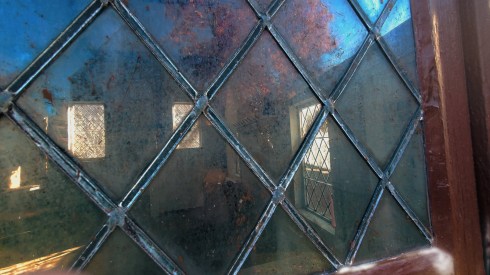Even though I recognize no connection between Halloween in general and the Salem Witch Trials (because #theywerenotwitches) and for that reason don’t particularly care for Salem Halloweens, I do like the holiday itself, especially its All Hallows Eve foundations. I like ghosts too, and ghost stories, especially if they are crafted elegantly and not just made up by Salem tour guides. For these reasons, I am always looking for a good Salem ghost story and last week I found one! It’s a humorous ghost story rather than a scary tale, written by Brander Matthews (1859-1929), the very prolific and pioneering professor of dramatic literature at Columbia University. “The Rival Ghosts” was first published in Harper’s Magazine in 1884 and then in Matthews’ Tales of Fantasy and Fact in 1896. Its plot features a Salem house haunted by two ghosts who duke it out before they enter into a spectral marriage, bringing peace to both the house and its owner, a Mr. Eliphalet Duncan, on the eve of his own marriage. Eliphalet Duncan is a young New York lawyer, of Scotch and Yankee stock, as his father had come over from Scotland and married a girl from an old Salem family, dating back to the days of the Witch Trials of course. Both his parents died when Eliphalet was quite young, leaving him two legacies: a haunted Salem house and (eventually) a Scottish title. The Salem house is described as “little” and dates back to the seventeenth century, so I’m picturing it as either the Narbonne House or the John Ward House, both of which I gothicized a bit. The Crowninshield-Bentley House might be a bit late but I’ll throw it in there too: “The Rival Ghosts” is not illustrated in either of its editions, but it seems to be calling out for some imagery!


 The Narbonne House of the Salem Maritime National Historic Site; John Ward and Crowninshield-Bently Houses, Peabody Essex Museum.
The Narbonne House of the Salem Maritime National Historic Site; John Ward and Crowninshield-Bently Houses, Peabody Essex Museum.
The Salem ghost never appears to the master of the house, but visitors would see and hear its presence on the second day of their stay, when it became determined to drive them away. So Eliphalet was a bit isolated in his little old Salem house, which became even more unwelcoming after he received word that his Scottish cousin had died, leaving him with the family title. Apparently the title came with a ghost, who was to attend his lord at all times and places, and so the Scottish Ghost was suddenly in Salem. Neither ghost was threatening to the new Lord Duncan, but they clearly hated each other, and caused quite a ruckus in his little house: wailing, rapping, throwing things, and playing a variety of musical instruments. He was determined to find out more about them in order to get rid of them, so that he might have peace and visitors in Salem. Towards that aim he invited an old friend to the house, a very brave friend with whom he had fought in the Civil War: his comrade left on day three of what was supposed to be a week’s stay, driven away by the the cacaphony of the rival ghosts. A very frustrated Eliphalet fled as well, to the White Mountains, accompanied by the personal Scottish Ghost and leaving the House Ghost in Salem: “spooks can’t quarrel when they are a hundred miles apart any more than men can,” our narrator observes.
 Window of Quaker Meeting House, Salem, Peabody Essex Museum.
Window of Quaker Meeting House, Salem, Peabody Essex Museum.
On the top of Mount Washington (I guess the cog railway had been built), Eliphalet met the love of his life, the sister of a former classmate who was he immediately determined to marry: Miss Kitty Sutton. A long courtship and engagement ensued, during which he told her about the ghosts. She expressed great interest in his family house, but wanted it cleared of spectres, so Eliphalet returned to Salem on a mission. He pleaded with the ghosts to vacate and managed to enter into a dialogue with them, during which it was revealed that the House Ghost was a woman! She had been murdered by her husband back in seventeenth-century Salem and had lingered ever since. Eliphalet suggested a spectral marriage to give them all some domestic peace, but the ghosts protested that there was too much of an age difference (the House Ghost was about 200 years old, while the Scottish Ghost claimed to be 450 years old) before finally consenting. There followed a double wedding, of ghosts and humans, and off the former went, leaving the little old Salem house to the new Mr. and Mrs. (Lord and Lady) Duncan. While it’s not entirely clear how their marriage led the ghosts to vacate, it’s a nice ending to a charming tale, full of spirited negotiations! Another discovery this past week: the old house interiors paintings of the Russian-American artist Morris Kantor (1896-1974), painted in 1930-31 after a summer tour of visiting historic houses. Maybe it was just the timing of these twin discoveries, but they seem like perfect atmostpheric illustrations for “The Rival Ghosts,” particularly this first one: The Haunted House.



Morris Kantor, The Haunted House (1930), Art Institute of Chicago; Still Life (1931), Artemis Gallery; Interior (1931), Smithsonian American Art Museum.












